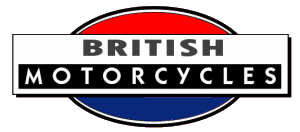

A bicycle firm was founded in Southampton by Bill Harvell, a rider of some note who had been on the podium at the 1932 Olympic Games.
In 1945 the business was taken over by Harris, Potterton and Robins, who renamed it Rotrax.
Shortly afterwards Freddie Prince took over and by 1952 they were selling around 40 cycles per week, with a staff of 20 people.
In 1952 Rotrax began production of Rotrax speedway motorcycle frames, with Mike Compton, the workshop foreman, in concert with a specialist welding company, developed a nickel-bronze brazing technique for the frame lugs and Renolds 531, achieving a high standard strength required for dirt-track racing. This method of brazing was later adopted by the aircraft industry.
The Rotrax frames were chromed by a firm in Gosport and then sent on to Alec Jackson's in London for the fitting of a JAP engine. These machines became known as the Jackson-Rotrax.
Fitted with a 500cc JAP engine running on alcohol fuel, and a countershaft carrying the clutch mounted in a rigid frame, the machine was well finished and well made.
It was most successful in its task for many years, and although various engines were used, it was the JAP speedway engine, for which Jackson had acquired manufacturing rights in 1951, that predominated.
At a later date the engines were built by George Greenwood (see Mk2, below).
The Rotrax frames were also built under licence by Phil Clarke of Norfolk.
Production continued until approximately 1976.
Further information:
Rotrax MK1
Rotrax Mk2
Speedway Index
Sources: speedwaymuseumonline.co.uk, Graces Guide, et al.